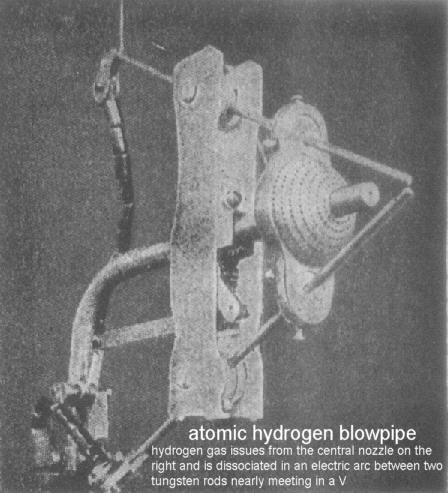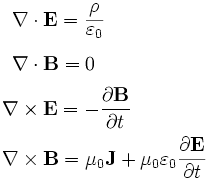HV Spark Gap Experiments
It's so weird. I was imagining building a device like this for the last couple of days, and then I find someone has already done it! In my imagination, I was thinking of using a Hydrogen Spark Gap, which is a glass tube full of Hydrogen. Here, to make the spark gap, he's using a rod of Carbon and a rod of Thoriated Tungsten (which is a TIG welding electrode, available at your local welding shop). For the Carbon rod I suppose you could use pencil graphite.
Note he is also using Leyden Jars for the capacitors. One interesting property of Leyden Jars is that they generate a radial electric field. They consist of two concentric pieces of metal -- that is, one inside the other along an axis. Imagine a small diameter pipe, and a slightly larger diameter pipe. You can slide the small pipe inside the large one. Now, if you stick little bits of plastic in the ends to keep them from touching, you now have a capacitor whose electric field will be radial. Harold Aspden says that a radial electric field causes ether to spin. There is a way to capture this aether spin energy in a simple oscillator. He gives drawings and a description here: Chapter 11. Compare Apsden's device to the spark gap one above. It seems to me that they are very similar, except one uses a spark gap and the other does not.
I guess another way of making a Hydrogen Spark Gap is to have a (Thoriated?) Tungsten spark gap across the tip of a welding torch, which has Hydrogen spraying out of it. This is exactly what they have in old Atomic Hydrogen welding torches (see post below).
I hypothesize that you could use the spark gap in an Atomic Hydrogen Welding getup as a negative resistance component in an oscillator. An oscillator with negative resistance should keep ringing forever.
Monday, October 25, 2010
Thursday, October 21, 2010
Monday, October 18, 2010
Sunday, October 17, 2010
Hydrogen Spark Gap
Another thing Langmuir discovered, while noodling around with Hydrogen and high voltage, was the Hydrogen Spark Gap. These were useful in the construction of early oscillators, such as Tesla Coils, and are still used today.
Tesla thought that there were at least two kinds of electrical waves. Transverse, which you read about in Physics textbooks now, and Longitudinal, which you never hear about.
Nowadays, electromagnetic waves are though of as being Transverse. That is, they oscillate in a direction perpendicular to the direction the wave is traveling. An example of a transverse wave, I suppose, would be an ocean wave as it comes towards the shore. The wave is moving toward the shore, but the top of the wave is going up -- 90 degrees from the direction the wave is going.
An example of a Longitudinal Wave is a sound wave traveling through air. It consists of layers of compressed and rare-ified air. Imagine it like a sandwich with various layers of things in it. That's the compressed and uncompressed air. If you were to stick a toothpick in the top of the sandwich, that's the direction in which the sandwich is moving -- along the axis of the toothpick.
Here's an interesting film in which old Hydrogen Spark Gaps are used in a piece of Tesla technology to generate Longitudinal Waves. Tesla Longitudinal Electricity Brought to you by the wonderful folks at Borderlands Science Research.
Tesla thought that there were at least two kinds of electrical waves. Transverse, which you read about in Physics textbooks now, and Longitudinal, which you never hear about.
Nowadays, electromagnetic waves are though of as being Transverse. That is, they oscillate in a direction perpendicular to the direction the wave is traveling. An example of a transverse wave, I suppose, would be an ocean wave as it comes towards the shore. The wave is moving toward the shore, but the top of the wave is going up -- 90 degrees from the direction the wave is going.
An example of a Longitudinal Wave is a sound wave traveling through air. It consists of layers of compressed and rare-ified air. Imagine it like a sandwich with various layers of things in it. That's the compressed and uncompressed air. If you were to stick a toothpick in the top of the sandwich, that's the direction in which the sandwich is moving -- along the axis of the toothpick.
Here's an interesting film in which old Hydrogen Spark Gaps are used in a piece of Tesla technology to generate Longitudinal Waves. Tesla Longitudinal Electricity Brought to you by the wonderful folks at Borderlands Science Research.
Atomic Hydrogen Welding

Hydrogen gas normally exists as H2 -- molecular Hydrogen. If a jet of molecular Hydrogen is passed through an electric arc (spark gap), the molecules of Hydrogen separate into individual atoms. This new gas is called Atomic Hydrogen. When Atomic Hydrogen recombines into molecular Hydrogen, a great deal of heat is produced. More heat than is produced by burning molecular Hydrogen (H2).
Atomic Hydrogen welding was invented by Langmuir. It is also discussed in Yull Brown's patent.
Here's some diagrams showing how it works. It's very simple. Atomic Hydrogen Welding. Note that the electrodes are Tungsten. Tungsten was also used by Tadahiko Mizuno in his water electrolysis experiments which resulted in LENR. The same experiment was reproduced by Dominico Cirillo. This may just be a coincidence. Langmuir may have used Tungsten electrodes simply because they have a high melting point.
William Lyne, author of Occult Ether Physics, states that more energy is released when Atomic Hydrogen recombines into H2 than is needed to separate H2 into Atomic Hydrogen. Apparently three orders of magnitude more energy. He proposes using this excess energy to run a furnace. See Atomic Hydrogen Furnace. I must admit he is kindof wacko, but read this introduction to his work by real physicist Tom Bearden.
Saturday, October 16, 2010
Practical Guide to Free Energy Devices

This is the new Phase Lock Loop circuit I'm building. Schematic is taken from Water Capacitor.
Chapter 10 of A Practical Guide to Free Energy Devices covers the PLL Lawton / Cramton circuit I'm building, among other things. See also Courtiestown Marine, as they have Bob Boyce and Dave Lawton circuits.
I've built a jig to wind the Bifilar coil for the circuit.
Subscribe to:
Posts (Atom)
